CAMBODIA
Society

Society
Cities in CAMBODIA
| Phnom-penh |
Society
State structure
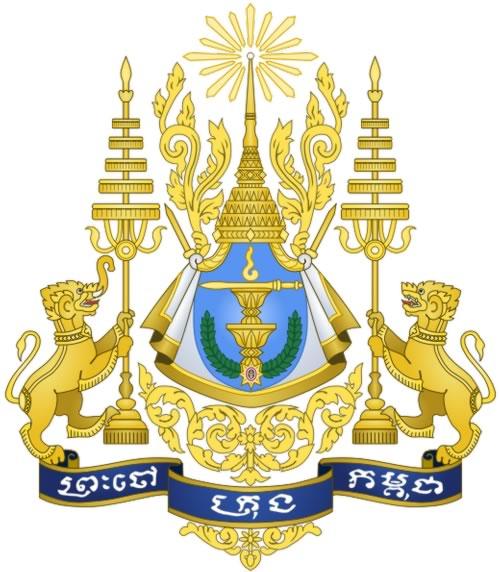
According to the September 1993 Constitution, Cambodia is a constitutional monarchy with a democratic multiparty system and an elected parliament. The King is the head of state of Cambodia, symbol of national unity and must therefore act as the highest political arbiter, but is bound by the constitution and therefore has a mainly ceremonial function.
On paper there is a division between the legislative, executive and judiciary, but in practice democracy does not always work well. The king is also Commander in Chief of Cambodia's Royal Armed Forces and Chairman of the National Defense Council. Kingship is not a hereditary office, the King is elected for life by a throne council consisting of 7 members. His deputy is the Speaker of Parliament, who is also a member of the Throne Council and appoints the Prime Minister.
The Throne Council is made up of the Presidents and Vice Presidents of the Senate and Assembly, the Prime Minister and the leaders of the two Buddhist orders.
Parliament
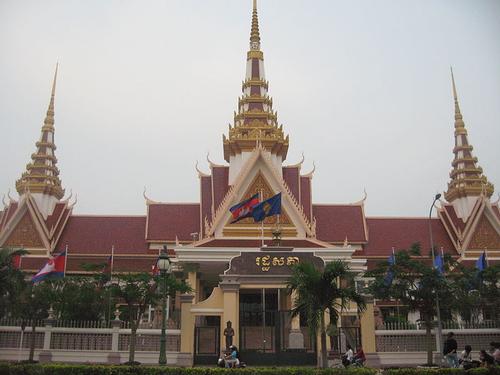 Cambodia ParliamentPhoto:Kiensvay CC 3.0 Unported no changes made
Cambodia ParliamentPhoto:Kiensvay CC 3.0 Unported no changes made
Since 1999 the parliament has consisted of two chambers. The National Assembly or the House of Commons consists of 122 representatives who are elected once every five years. The Senate or House of Lords consists of 61 delegates who are partly elected and partly appointed; their term of office is six years. All Cambodians aged 18 and over are allowed to vote.
The government consists of the Prime Minister, the Ministers and the Secretaries of State. The king appoints the prime minister and the cabinet after approval by the National Assembly. The government is answerable to parliament and the Assembly can send the government home, provided there is a two-thirds majority. For the current political situation, see chapter history.
Administrative division
Cambodia is administratively divided into five regions and further into 20 provinces and four separate urban administrative areas:
| province | capital | surface | population per 1998 |
| Banteay Mean Chey | Sisophon | 6.679 km2 | 577.772 |
| Bat Dambâng | Bat Dambâng | 11.702 km2 | 793.129 |
| Kâmpóng Cham | Kâmpóng Cham | 9.799 km2 | 1.608.914 |
| Kâmpóng Chhnang | Kâmpóng Chhnang | 5.521 km2 | 417.693 |
| Kâmpóng Spoe | Kâmpóng Spoe | 7.017 km2 | 598.882 |
| Kâmpóng Thum | Kâmpóng Thum | 13.814 km2 | 569.060 |
| Kâmpôt | Kâmpôt | 4.873 km2 | 528.405 |
| Kândal | Ta Khmau | 3.568 km2 | 1.075.125 |
| Kaôh Kông | Krong Kaôh Kông | 11.160 km2 | 132.106 |
| Krâchéh | Krâchéh | 11.094 km2 | 263.175 |
| Môndôl Kiri | Sen Monorom | 14.288 km2 | 32.407 |
| Otdar Mean Chey | Sâmraông | 6.158 km2 | 68.279 |
| Pouthisat | Pouthisat | 12.692 km2 | 360.445 |
| Preah Vihéar | Thêng Méancheay | 13.788 km2 | 119.261 |
| Prey Vêng | Prey Vêng | 4.883 km2 | 946.042 |
| Rôtanak Kiri | Lumphat | 10.782 km2 | 94.243 |
| Siem Réab | Siem Réab | 10.299 km2 | 696.164 |
| Stoeng Trêng | Stoeng Trêng | 11.092 km2 | 81.074 |
| Svav Rieng | Svav Rieng | 2.966 km2 | 478.252 |
| Takêv | Takêv | 3.563 km2 | 790.168 |
Urban areas
| province | capital | surface | inhabitants per 1998 |
| Krong Kêh | Krong Kêh | 336 km2 | 28.660 |
| Krong Pailin | Pailin | 803 km2 | 22.906 |
| Krong Preah Sihanouk | Preah Sihanouk | 868 km2 | 155.690 |
| Phnom Penh | Phnom Penh | 290 km2 | 999.804 |
Education
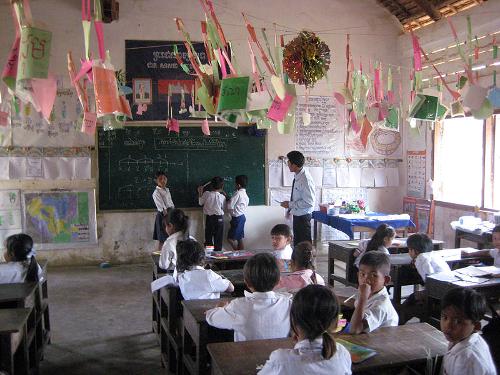 School class CambodiaPhoto: Helt CC 3.0 Unported no changes made
School class CambodiaPhoto: Helt CC 3.0 Unported no changes made
Education only got off to a good start after the disappearance of the Khmer Rouge. The French had paid virtually no attention to it in the colonial period and there was no education whatsoever under the Khmer Rouge. Intellectuals and therefore teachers were the first to be tackled by them, with the result that an education system had to be built from 1979 onwards.
Cambodian children are obliged to attend school and primary education starts at the age of six. This primary education lasts six years and is followed by lower and upper years of three years each. After this, students can progress to higher education, including two universities, the University of Cambodia and the Royal University of Phnom Penh.
Most schools in Cambodia are state schools, there are also a number of private schools and Buddhist monastic schools.
Despite the often poor quality of schools, illiteracy has declined sharply since 1994. Illiteracy still occurs mainly in rural areas, among minorities and among women. One of the biggest problems is the teachers, who often do not have the necessary qualifications and are poorly motivated because of the mediocre salaries and poor working conditions.
Typical Cambodia
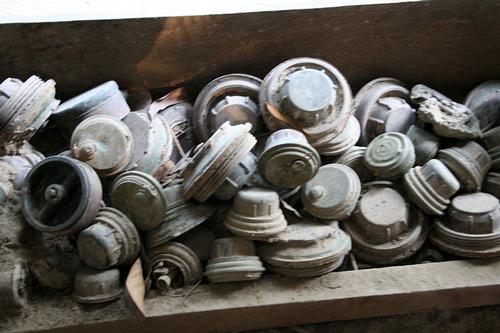 Landmines CambodiaPhoto: Neil Rickards CC 2.0 Generic no changes made
Landmines CambodiaPhoto: Neil Rickards CC 2.0 Generic no changes made
MINES
There are still many minefields on the territory of Cambodia. These minefields date back to the 1980s and were created during the battle between the government army and the Khmer Rouge.
In 1993 the number of mines was estimated at ten million, located everywhere, but especially around Battambang in the west and Pailin on the border with Thailand. The mines have already cost many victims; more than 40,000 Cambodians have been maimed. It is expected that it will take another 25 years before all mines are cleared.
However, if one stays on the prescribed paths as a tourist, little can happen.
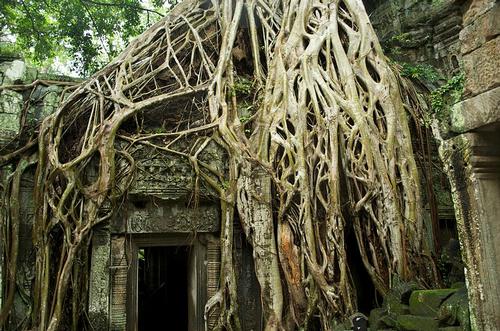 Cambodia Angkor Wat tree stumpsPhoto: GayleKaren CC 3.0 Unported no changes made
Cambodia Angkor Wat tree stumpsPhoto: GayleKaren CC 3.0 Unported no changes made
ANGKOR WHAT
The kingdom of Angkor and the accompanying temple complex originated in the turbulent time of the 9th to the 12th century, during which capital was regularly changed.
After all, the Khmer king Surayavarman II (1113-150) was the one who went down in history as the builder of Angkor Wat. Construction took place in the first half of the 12th century. The temple complex is considered one of the largest structures in Asia with an area of 1.5 km by 1.3 km and is surrounded by a moat 200 meters wide.
The destruction of Angkor Wat by the Cham in 1177 gave one of Surayavarman's successors the opportunity not only to restore Angkor, but also to build the area with new temples and a new city of Angkor Thom.
Sources
Canesso, C. / Cambodia
Chelsea House Publishers
Colet, J. / Cambodia handbook
Footprint Handbooks
Green, R. / Cambodia
Lucent Books
Kleinen, J. / Cambodja
Koninklijk Instituut voor de Tropen ; Novib
Peterse, L. / Cambodja
Gottmer/Becht,
Wulf, A. / Cambodja, Laos
Het Spectrum
CIA - World Factbook
BBC - Country Profiles
Copyright: Team The World of Info